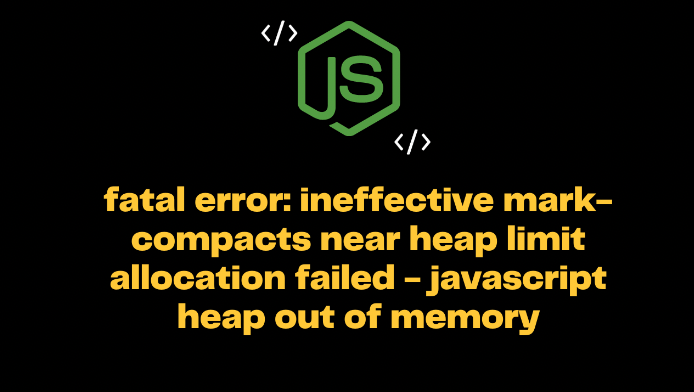Does JavaScript Still Belong in Backend Development?
Oh, JavaScript—our chaotic neutral friend. The language that took the world by storm when it hopped out of the browser and into the backend scene with Node.js back in 2009. Fast forward to 2025, and one burning question lingers like last night’s questionable takeout: Is JavaScript still a solid choice for backend development, or has the game moved on?
Before we dive into the nitty-gritty, let me set the stage. Picture this: a few years ago, I was living my own version of the Pokémon paradox. You know, that overwhelming moment when you’re forced to pick a language to “start your journey”—your Charmander, Squirtle, or Bulbasaur of the coding world. Most people grab JavaScript because it’s everywhere—like that annoying guy at every party who claims to DJ. But me? I went rogue. I picked Swift. Yes, Swift. (We’ll get back to this later; trust me, it’s relevant.)

Why JavaScript? Why Not?
JavaScript thrives on versatility. It’s like the language equivalent of your favorite pair of jeans—works on a night out, works at brunch. With its extensive ecosystem and frameworks like Express.js, JavaScript makes it easy to whip up small APIs or even serverless functions on a lazy afternoon. Startups especially love it because, let’s face it, it’s cheap and cheerful. You can use the same devs for frontend and backend—one language to rule them all.
But when you take a closer look—especially at large-scale systems—the cracks begin to show. Dynamic typing, single-threaded processing, and some… questionable runtime quirks (I’m looking at you, undefined and NaN) mean JavaScript sometimes feels like trying to build a skyscraper with Play-Doh.

The Rise of Backend-Specific Languages 🚀
Over the past few years, we’ve seen a noticeable shift in the backend world. Developers are ditching JavaScript for languages that are laser-focused on backend tasks. Let’s look at why:
1. Type Safety is the New Black
Backend developers are all about preventing runtime errors, and static typing is a game-changer. While TypeScript has brought some sanity to JavaScript, it’s still like putting a tuxedo on a chaotic toddler. Compare that to Kotlin or Go, where type safety is baked into the DNA, and it’s not hard to see why people are switching.
2. Performance Matters
Need speed? Look no further than Rust and Go. These languages are built to handle high-load applications with superior memory management and concurrency. In contrast, Node.js’s single-threaded event loop starts to feel like an old bicycle struggling up a hill when CPU-intensive tasks come knocking.
Even Spring with Kotlin offers a scalable, multi-threaded architecture that can gracefully handle the demands of enterprise systems. Honestly, at this point, even PHP is smirking in the corner.
3. Ecosystem Maturity
While JavaScript’s npm is unmatched in sheer volume, mature backend ecosystems like Spring (Java/Kotlin) and Django (Python) offer a more curated experience. These frameworks were built for backend-heavy lifting, not retrofitted onto a browser-first language.
Is It Time to Break Up with JavaScript? 💔
Now, here’s the kicker: If you find yourself reaching for NestJS to make your backend more “enterprise-ready,” you might want to ask yourself why you’re not just using Spring or Go. NestJS is fantastic, don’t get me wrong, but at some point, you’re essentially trying to replicate the structure of more backend-focused tools on top of a runtime (Node.js) that wasn’t designed for it.
Even I’ve had my moments of doubt. After spending years building scalable systems with NestJS, I can’t help but wonder: Would this be easier in Kotlin or Go? The answer is often yes. And let’s be honest—Go is fun. Writing microservices with gRPC in Go feels like that first cup of coffee in the morning—crisp, clean, and oddly satisfying.
My Backend Pivot in 2025 🛠️
So, where am I now? Well, I’m taking a detour back to my roots. Swift, my original coding crush, has been calling me back. With frameworks like Vapor, it’s finally time to give Swift a proper shot in the backend. Why not? It’s fast, clean, and frankly, the developer experience is unmatched.
JavaScript will always have a place in my heart—and in small APIs, serverless functions, and hobby projects. But for larger, more robust systems, the backend world has clearly moved on. And honestly? It’s for the better.

Wrapping Up: A Shift in Backend Development 🌐
As we move further into 2025, it’s clear that the backend landscape is evolving rapidly. JavaScript has done its job, making web development accessible to the masses, but now it’s time for backend development to reach new heights with specialized languages that offer better performance, stronger type safety, and mature ecosystems.
In fact, a recent survey shows that 43% of developers have moved from JavaScript to more performant backend languages like Go, Rust, and Kotlin for large-scale applications, a trend that is only expected to grow. This shift suggests that the backend world is moving away from the “one-size-fits-all” approach and embracing languages built specifically for high-performance, high-concurrency tasks.
So, while JavaScript will undoubtedly remain a staple for many use cases, it’s clear that for the future of large-scale backend systems, we may have to say, “It’s not you, it’s me,” and move on to greener pastures.
The Verdict 📊
- JavaScript is still a great choice for small to medium APIs and serverless functions.
- Go, Rust, and Kotlin or even PHP are becoming the go-to choices for high-performance, large-scale backend systems.
- Type safety, performance, and ecosystem maturity are crucial for backend growth.

At the end of the day, the tech landscape is vast and ever-changing. The key is picking the right tool for the job, whether that’s JavaScript, Go, Rust, or something else entirely.
Let’s continue to embrace the chaos and build amazing things! 🚀